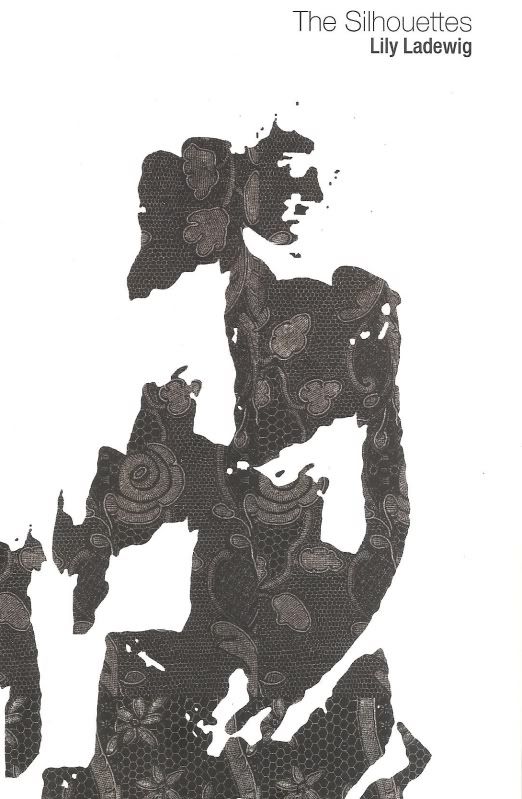Joseph Cornell, an American artist from the mid-twentieth century, was best known for his shadow boxes; his glass-enclosed constructions contain assemblages collaged from
ephemera he found while on walking tours of New York City.
Adam Gopnik's article “Sparkings,” from a February 2003 issue of The New Yorker,
traces both Cornell's life as a man and his artistic influences. Of
Cornell's shadow boxes, he writes: they provide a “visual
experience of [a] city dweller,” in that the assorted bric-a-brac
arranged within them show “the joys of solitary wandering” from
Queens to Manhattan and back again. To Gopnik's mind, Cornell was a
window shopper par excellence, always scouring stores for a material object he could add to his own, miniature display cases.
A
quick glance at the “Notes” section in the back matter of The
Silhouettes (Springgun
Press, 2012), which is Lily Ladewig's debut collection of poetry, reveals
her indebtedness to Cornell. The poet used several biographies, as
well as the artist's own notes and letters, as “inspiration and
source material” for the sequence of poems titled “Shadow Box”
that recurs intermittently throughout the collection. Take, for
instance, the first iteration of the series:
Let's build a fire. A shifting
location. A change of wind and I can smell myself. Like something
foreign. And into the fuller fascination. I can see the Chrysler
Building from the window of the subway car on the bridge. I would
measure the distance between us footwise. I would pull this poem from
you with my whole body. Beneath your bright palms my breasts might
become a reality. While my hands, full of acreage. Are budding
outside your open third story window. The dancers push their painted
feet across the page. (8)
Visually,
Ladewig shapes the poem into a square that mimics the form of
Cornell's shadow boxes and engages the material tradition of concrete
poetry. Syntactically, she writes in sentence fragments, their
piecemeal formation fostering an assemblage-like aura associated with
collage. But the content, as well, provides snippets of Cornell's
life and work: his New York City rambles in the image of “the Chrysler
Building from the window of the subway car on the bridge,” his
obsession with photographs of Hollywood starlets in the phrase
“Beneath your bright palms my breasts,” while “The dancers push
their painted feet across the page” acknowledges his preoccupation
with ballerinas and ballet.
Toward
the end of his New Yorker article,
Gopnik claims that Cornell's shadow boxes demonstrate:
The
balance of the metaphysical and the quotidian, the intimate address
and the popular symbols, the private mythologizing of mass culture,
the singing New York street and the oblique references, a dream of
France dotting the work like raisins in a pudding—all these things
are far closer to American modernist poetry than to its art.
While
it may be unfair to align or compare too closely The
Silhouettes with Cornell's
assemblages, the balancing act Gopnik addresses in the artist's work,
which he likens to “American modernist poetry,” can be seen in
Ladewig's verse. In the final set of “Shadow Box” poems, she
writes:
Repetition is necessary. It evens
out the body. I watch the Atlantic Ocean even out the evening.
Pressing silence into. Somewhere in the world you are moving and the
steps you take bring you closer to or farther from me. If only
slightly. What can I do with this room but remember it. I am getting
better. Something imaginary. I've been advised to hold my sadness in
my hands like a ball. To observe it. Something invisible. Fields of
poppies. Fields of wild. Lavender. In the Petit Trianon. Everyone
dressed in white. (62)
The
metaphysical does balance out the quotidian: the speaker, on the one
hand, says, “Repetition is necessary”; on the other hand, “I
watch the Atlantic Ocean.” Likewise, the Chrysler Building of the
earlier permutation balances itself against the “Petit Trianon”
of Versailles, juxtaposing New York City with France. More
than anything, though, The Silhouettes
achieves a balance between the universal and the specific by placing
epic images like “Sea foam green and the infinite numbers”
(44), next to the personal, such as a colloquialism like “I was so dunzo”
(45). In the end, Ladewig's “Small and glass-fronted” (45) shadow
boxes “function” as an “accumulation” (61): assemblages that
prove “The city is the place where” (30) we can collect ephemera
from our surroundings so as to build our most intimate
subjectivities.


No comments:
Post a Comment